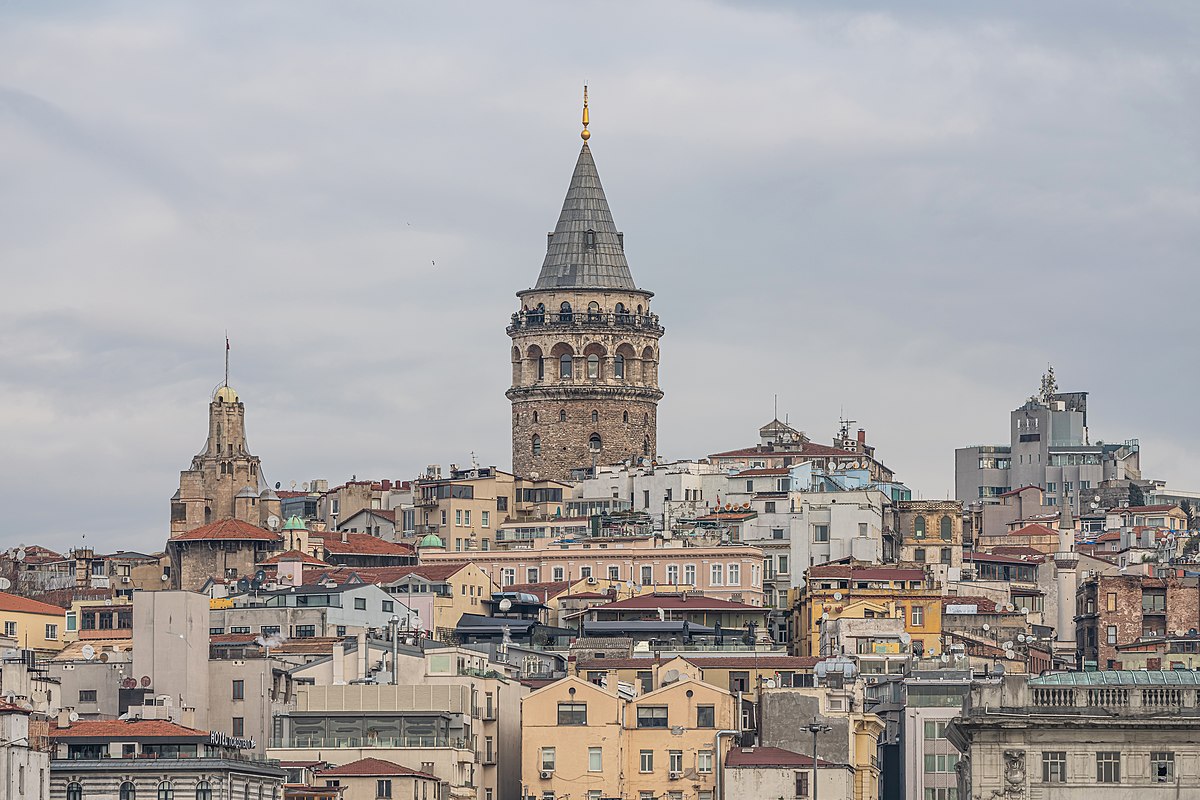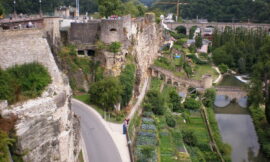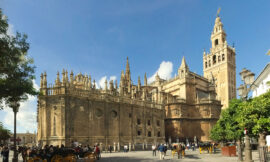Perched on the skyline of Istanbul, the Galata Tower stands as a historic and architectural gem, offering panoramic views of the city that spans continents. With its commanding presence and rich history, this iconic landmark has become synonymous with the enchanting allure of Istanbul, drawing visitors from around the world to witness the beauty that unfolds from its heights.
Historical Origins: The Galata Tower, originally known as the Christea Turris (Tower of Christ) during the Byzantine period, has roots dating back to the 6th century. The current tower, however, was constructed by the Genoese in the 14th century, as part of the defensive walls surrounding their colony of Galata. Its strategic location provided a vantage point for monitoring maritime traffic on the Golden Horn.
Architectural Splendor: Designed in a medieval Romanesque style, the Galata Tower rises to a height of about 67 meters (220 feet). Its distinctive cone-capped silhouette and cylindrical structure make it a prominent feature of Istanbul’s skyline. The tower has undergone several renovations and restorations over the centuries, preserving its architectural integrity.
360-Degree Views: One of the primary attractions of the Galata Tower is its observation deck, which offers breathtaking 360-degree views of Istanbul and its surroundings. From this elevated vantage point, visitors can gaze upon the historic peninsula, the Bosphorus Strait, and the European and Asian sides of the city. The vista encompasses iconic landmarks such as the Hagia Sophia, Topkapi Palace, and the Blue Mosque, creating a tableau of Istanbul’s rich history and cultural diversity.
Cultural Significance: The Galata Tower has witnessed centuries of historical events and cultural transformations. Over the years, it has served various purposes, including as an observation point, a fire lookout, and even a prison. Its historical significance is woven into the fabric of Istanbul’s narrative, making it a symbol of the city’s resilience and enduring spirit.
Nighttime Illumination: As the sun sets over Istanbul, the Galata Tower takes on a magical quality. Illuminated against the night sky, it becomes a beacon that can be seen from various parts of the city. The tower’s nighttime allure adds to its charm, inviting locals and tourists alike to appreciate its beauty after dark.
Surrounding Neighborhood: The Galata Tower is situated in the vibrant Galata district, known for its narrow streets, historic buildings, and lively atmosphere. The area around the tower is a hub of activity, with charming cafes, boutiques, and cultural spaces. Visitors can explore the neighborhood’s eclectic blend of modernity and tradition before or after ascending the tower.
Event Venue and Cultural Center: In addition to its historical and touristic significance, the Galata Tower occasionally hosts events and cultural activities. Concerts, art exhibitions, and other gatherings take place within its walls, adding a dynamic dimension to its role as a cultural landmark.
Visitor Experience: Climbing the Galata Tower’s spiral staircase to reach the observation deck is an experience in itself. The journey through its historical interiors and the anticipation of the panoramic views create a sense of connection with the past and the present. The observation deck, with its telescopes and informative panels, provides context and insights into the city’s geography and landmarks.
Conclusion: The Galata Tower, with its enduring elegance and historical resonance, stands as a testament to Istanbul’s multifaceted identity. It not only offers a visual feast for those who ascend its heights but also symbolizes the city’s ability to bridge the past and present. As a cultural icon and a witness to the passage of time, the Galata Tower continues to capture the imagination of those who seek to unravel the layers of Istanbul’s captivating story.



